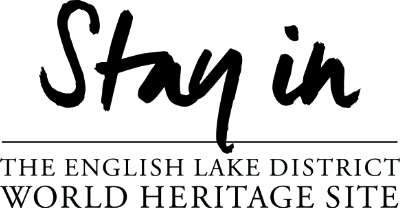As we said in our last blog, the winter is a great time to look at the night sky in the Lake District. At the Three Shires Inn we are blessed with minimal light pollution and some beautiful scenery, which makes it a particularly great spot for looking at the stars. But it’s also the perfect place to take photos of them as well.
But how do you take a good photo in the dark? To find out, we chatted with Cumbrian photographer Ben Bush. As well as selling his pictures via his website and in local shops like Cherrydidi in Keswick and Ambleside, Ben also runs photography courses in the UK and abroad. Check out his website for more details.
So, Ben, how did you get into photography?
“We had a dark room on the stairs when I was growing up. My parents took photos and my grandparents took photos and I’ve still got all the old cameras they had. It was something I’ve always done."
“I’ve always enjoyed going out for walks at night. I like being out when it’s quiet with just me and my dogs. One night I was out and I took a picture at Blea Tarn and I managed to pick out Andromeda in one corner. From that, my night walks in the Langdales became about going to places like Stickle Tarn and Pavey Ark and staying up there, seeing the stars above and watching the sun coming up. Blea Tarn is a real favourite for me for photography and the whole of Langdale is a very special place. The quality of the skies above there is great. It’s a beautiful place to go stargazing and it’s also an amazing place for astrophotography."
Photographing the stars needn’t cost the Earth
“With very, very basic entry level kit you can quite easily begin to take good pictures of the night sky. You just need something which lets you control all the settings yourself: So that’s the focus, the aperture - which is the size of the hole which lets light into the camera - the shutter speed and the ISO, which controls how sensitive the camera is to light."
“If you’ve got a camera that can do that, then you can quite easily stay somewhere like the Three Shires Inn, walk up the Old Dungeon Ghyll and Stickle Tarn and see the Milky Way out across the sky and capture that."
“The other thing you’ll definitely need is a tripod. This is because you’ll have to have a long exposure to take a picture of the night sky and, if you hold the camera in your hands, it will shake and the image will be blurry. You can buy a really cheap tripod which will do the job for £20."

Getting the right set up
“Ideally, you’ll want to use a lens with a very wide aperture. This means much more light can come into the camera, which is obviously important when it’s dark. The size of the aperture is the F number you’ll find on your camera and is referred to as the F-stop."
“You’ll need to have something like an ISO of 3200 and the F-stop as wide as it can be and a 20 second exposure. With that you’ll be able to see the landscape and the stars."
“It’s very hard to give exact settings. Everything will make a difference; the size of the sensor in your camera and the focal length of your lens. The reality is that your exposure is going to be around 15 or 20 seconds. If you expose it for 30 seconds it will still look cool, but there might be slight trails because the Earth and the stars are moving relative to each other."
Try lots of different settings
“Experimentation is the key with all of this. Take a base setting and then from there you can tweak it either way. There are so many different factors. When you are actually doing it there will be different levels of light, there might be water in the air so the light will refract; there are so many different variables."
Find something to focus on
“Modern cameras have a live view screen, which you can look at to frame your picture. But in the dark it won’t show you what the final picture will look like. You’ll only know that after you’ve taken it."
“You will be able to see some things though; maybe a single star or a pin prick of light on a building. If you focus in on this you can then use the zoom in button on the live view to tweak the focus. When that point of light goes to the smallest that’s when it is most in focus and you’re ready to take your picture.”

Posted:
Category:
Lake District, Three Shires Inn
Author: Nina



